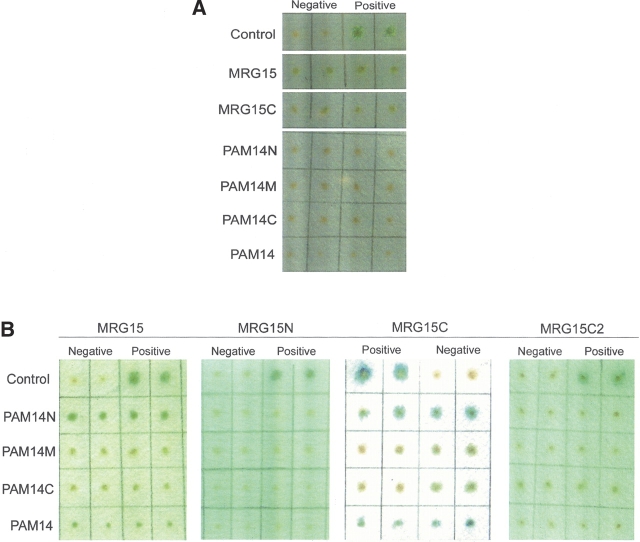Figure 2.
Yeast two-hybrid assay of the interaction between MRG15 and PAM14. MRG15, MRG15N, MRG15C, and MRG15C2 were cotransformed with pB42AD as the baits, and PAM14 and its fragments (PAM14N, PAM14M, and PAM14C) were cotransformed with pGilda as the preys. The pSH17-4 plasmid was used as the positive control and the pRFHM1 plasmid as the negative control for transcriptional activation. (A) Yeast two-hybrid analyses of pGilda-MRG15s (MRG15C and MRG15) with the empty prey plasmid pB42AD and pB42AD-PAM14s (PAM14N, PAM14M, PAM14C, and PAM14) with the empty bait plasmid pGilda. The baits or preys alone cannot activate the reporter markers by themselves. (B) Yeast two-hybrid analyses to determine the interactions of MRG15, MRG15N, MRG15C, and MRG15C2 with PAM14 and its fragments (PAM14N, PAM14M, and PAM14C). (Left to right) Full-length MRG15 (residues 1–323), MRG15N (residues 1–150), MRG15C (residues 151–323), and MRG15C2 (residues 173–323). Both MRG15 and MRG15C have direct interactions with PAM14 and PAM14N at comparable levels, whereas MRG15N and MRG15C2 have no interaction with PAM14 or its fragments.

